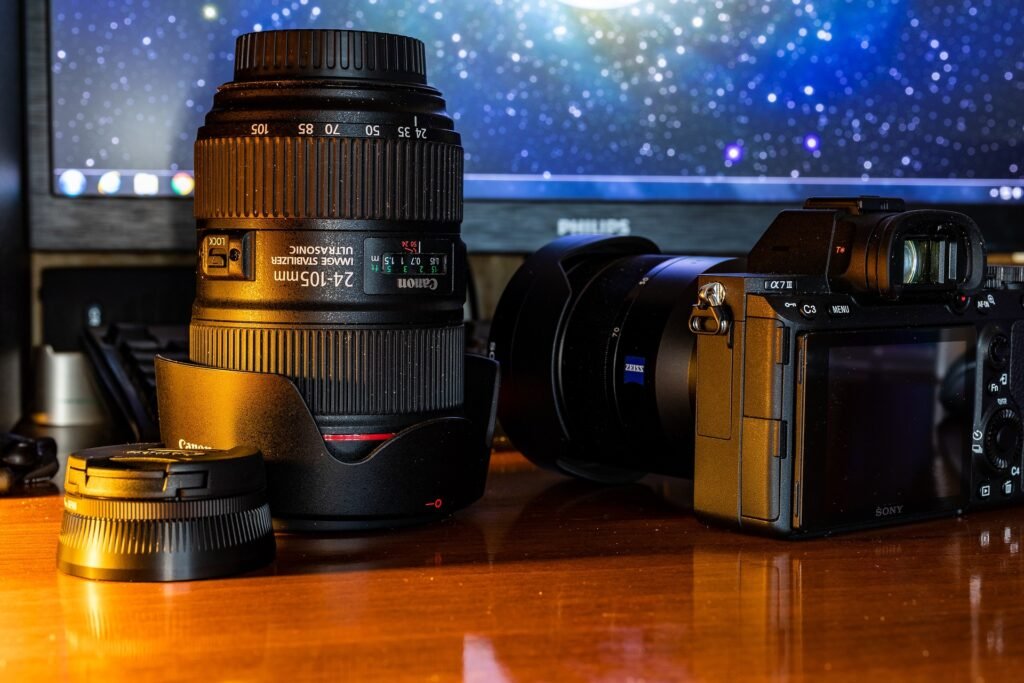Physical Address
304 North Cardinal St.
Dorchester Center, MA 02124
Physical Address
304 North Cardinal St.
Dorchester Center, MA 02124
In the ever-evolving world of photography, the debate between mirrorless cameras and DSLRs continues to captivate enthusiasts and professionals alike. As we navigate through 2024, it’s becoming increasingly clear that mirrorless technology is not just a passing trend but a revolutionary force in the industry. Let’s explore the top 10 advantages that mirrorless cameras hold over their DSLR counterparts in the current landscape.

One of the most immediately noticeable advantages of mirrorless cameras is their compact size and lighter weight compared to DSLRs. This difference stems from the absence of the mirror mechanism and pentaprism found in DSLRs.
Real-world impact: Many photographers report being able to shoot for longer periods without fatigue, and some have even switched entirely to mirrorless systems for their daily work due to the improved portability.
The electronic viewfinder in mirrorless cameras offers several benefits over the optical viewfinders in DSLRs:
Photographer’s perspective: “The EVF has revolutionized how I approach exposure. I can see exactly how my image will turn out before I press the shutter, which has significantly reduced my post-processing time.” – Emma Chen, Professional Landscape Photographer
Mirrorless cameras excel in situations where silence is golden:
Many mirrorless cameras offer a completely silent electronic shutter mode, a feature that’s particularly valuable in sensitive shooting environments.
Advancements in mirrorless technology have led to significant improvements in autofocus systems:
Real-world application: Sports photographers have increasingly adopted mirrorless systems for their ability to track fast-moving subjects with unprecedented accuracy.
Without the limitations of a physical mirror mechanism, mirrorless cameras can achieve higher continuous shooting speeds:
This advantage is particularly crucial for sports, wildlife, and action photographers who need to capture split-second moments.
While some DSLRs offer in-body stabilization, it’s become a standard feature in many mirrorless cameras:
Some mirrorless systems combine in-body and lens-based stabilization for even better results, allowing for up to 7-8 stops of shake reduction.
Mirrorless cameras have taken the lead in video features:
Filmmaker’s insight: “The transition from DSLRs to mirrorless has been a game-changer for hybrid shooters. I can seamlessly switch between high-quality stills and cinema-grade video without changing my kit.” – Alex Moreno, Commercial Photographer and Videographer
Mirrorless cameras excel at breathing new life into old glass:
This adaptability not only provides creative options but can also be a cost-effective way to build a diverse lens collection.
While DSLRs offer live view, mirrorless cameras are inherently designed around this feature:
This advantage makes mirrorless cameras more versatile in various shooting scenarios, from low-angle shots to self-portraits.
Mirrorless systems represent the cutting edge of camera technology:
Industry trend: Major camera manufacturers are investing heavily in mirrorless technology, with some even discontinuing DSLR lines to focus on mirrorless development.
As we progress through 2024, the advantages of mirrorless cameras over DSLRs have become more pronounced than ever. From their compact size and advanced autofocus capabilities to their superior video features and adaptability, mirrorless cameras offer a compelling package for photographers of all levels.
While DSLRs still have their place and loyal users, the trend is clear: mirrorless is the future of digital photography. As the technology continues to evolve, we can expect even more innovations that will further cement the position of mirrorless cameras at the forefront of the industry.
Whether you’re a seasoned professional looking to streamline your kit or an enthusiast ready to take your photography to the next level, the advantages of mirrorless cameras make them a worthy consideration for your next upgrade.